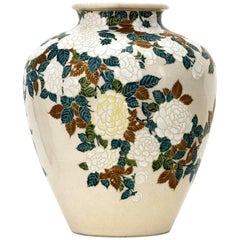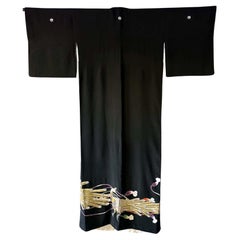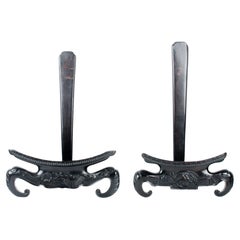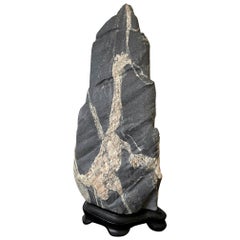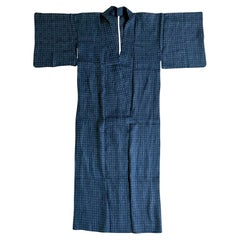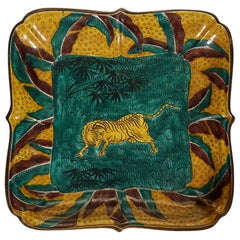Georgia - Asian Art and Furniture
1890s Japanese Japonisme Antique Georgia - Asian Art and Furniture
Ceramic
Mid-20th Century Japanese Showa Georgia - Asian Art and Furniture
Silk
19th Century Chinese Antique Georgia - Asian Art and Furniture
Zitan
20th Century American Modern Georgia - Asian Art and Furniture
Stone
Early 20th Century Japanese Taisho Georgia - Asian Art and Furniture
Hemp
19th Century Japanese Japonisme Antique Georgia - Asian Art and Furniture
Ceramic
Early 20th Century Japanese Japonisme Georgia - Asian Art and Furniture
Wood, Lacquer
Early 1900s Japanese Japonisme Antique Georgia - Asian Art and Furniture
Brocade, Silk, Wood
19th Century Japanese Edo Antique Georgia - Asian Art and Furniture
Natural Fiber
20th Century American Organic Modern Georgia - Asian Art and Furniture
Malachite
15th Century and Earlier Chinese Archaistic Antique Georgia - Asian Art and Furniture
Stoneware
Late 17th Century Japanese Japonisme Antique Georgia - Asian Art and Furniture
Wood, Paper
17th Century Chinese Antique Georgia - Asian Art and Furniture
Porcelain
Early 17th Century Japanese Edo Antique Georgia - Asian Art and Furniture
Wood, Lacquer
Early 20th Century Japanese Meiji Georgia - Asian Art and Furniture
Ceramic
Early 19th Century Chinese Antique Georgia - Asian Art and Furniture
Silk
15th Century and Earlier Korean Archaistic Antique Georgia - Asian Art and Furniture
Ceramic
17th Century Chinese Antique Georgia - Asian Art and Furniture
Porcelain
Early 20th Century Japanese Japonisme Georgia - Asian Art and Furniture
Metal, Enamel
19th Century Japanese Meiji Antique Georgia - Asian Art and Furniture
Textile, Brocade
Early 20th Century Japanese Japonisme Georgia - Asian Art and Furniture
Linen
Late 19th Century Japanese Japonisme Antique Georgia - Asian Art and Furniture
Silk, Wood
1810s Japanese Edo Antique Georgia - Asian Art and Furniture
Paper
19th Century Japanese Meiji Antique Georgia - Asian Art and Furniture
Wood, Lacquer
Late 19th Century Japanese Meiji Antique Georgia - Asian Art and Furniture
Wood, Lacquer
2010s American Post-Modern Georgia - Asian Art and Furniture
Ceramic
Late 20th Century American Modern Georgia - Asian Art and Furniture
Ceramic
1910s Japanese Meiji Vintage Georgia - Asian Art and Furniture
Silk
19th Century Korean Other Antique Georgia - Asian Art and Furniture
Silver, Copper, Iron
1920s Japanese Japonisme Vintage Georgia - Asian Art and Furniture
Bamboo
Late 20th Century Japanese Modern Georgia - Asian Art and Furniture
Ceramic
Early 19th Century Chinese Chinese Export Antique Georgia - Asian Art and Furniture
Silk, Giltwood
Early 2000s Japanese Organic Modern Georgia - Asian Art and Furniture
Bamboo
Early 2000s Japanese Japonisme Georgia - Asian Art and Furniture
Rope, Wood, Lacquer
19th Century Japanese Edo Antique Georgia - Asian Art and Furniture
Brocade, Silk
Late 20th Century American Modern Georgia - Asian Art and Furniture
Ceramic
Late 19th Century Japanese Japonisme Antique Georgia - Asian Art and Furniture
15th Century and Earlier Korean Archaistic Antique Georgia - Asian Art and Furniture
Bronze
Early 2000s Japanese Organic Modern Georgia - Asian Art and Furniture
Bamboo
15th Century and Earlier Antique Georgia - Asian Art and Furniture
Ceramic
20th Century Japanese Modern Georgia - Asian Art and Furniture
Bamboo
1890s Japanese Japonisme Antique Georgia - Asian Art and Furniture
Lacquer
20th Century Chinese Qing Georgia - Asian Art and Furniture
1890s Japanese Meiji Antique Georgia - Asian Art and Furniture
Silk
1930s Chinese Chinoiserie Vintage Georgia - Asian Art and Furniture
Metal, Enamel
19th Century Korean Other Antique Georgia - Asian Art and Furniture
Ceramic
19th Century Japanese Japonisme Antique Georgia - Asian Art and Furniture
Bronze
Early 20th Century Japanese Japonisme Georgia - Asian Art and Furniture
Bamboo
Early 19th Century Chinese Antique Georgia - Asian Art and Furniture
Silk
Early 20th Century Japanese Meiji Georgia - Asian Art and Furniture
Cotton
18th Century Korean Archaistic Antique Georgia - Asian Art and Furniture
Ceramic
Late 20th Century Chinese Chinese Export Georgia - Asian Art and Furniture
Silk, Glass, Wood
Early 1900s Japanese Japonisme Antique Georgia - Asian Art and Furniture
Silver
Early 1900s Japanese Japonisme Antique Georgia - Asian Art and Furniture
Porcelain
Early 20th Century Japanese Other Georgia - Asian Art and Furniture
Wood
1930s Japanese Showa Vintage Georgia - Asian Art and Furniture
Paper
21st Century and Contemporary Japanese Modern Georgia - Asian Art and Furniture
Ceramic
17th Century Japanese Japonisme Antique Georgia - Asian Art and Furniture
Lead
Late 18th Century Korean Other Antique Georgia - Asian Art and Furniture
Ceramic
Early 20th Century Japanese Japonisme Georgia - Asian Art and Furniture
Lacquer
Read More
Symbols of Happiness and Rebirth Adorn This Japanese Satsuma Bowl
Decorated with white cranes and the sought-after thousand-butterflies motif, the Meiji-period vessel offers both a celebration of traditional aesthetics and a clear reflection of the era’s appetite for exquisite export pieces.
Chicago’s Pagoda Red Has a Spirited Mix of Asian Antiques and Bold New Art
For 25 years, gallerist Betsy Nathan has leveraged her keen eye and key connections to bring a unique selection of rare finds to the market.
In L.A., Gallerist JF Chen Has Long Championed Eclectic Blue-Chip Design
Now working alongside his daughter Bianca, dealer Joel Chen has presented a most covetable array of antiques, art and contemporary creations for more than 40 years.
12 Calming Spaces Inspired by Japanese Design
From cherry-blossom-adorned walls paired with glamorous lighting to wood-paneled ceilings above checkerboard-patterned chairs, these 12 spaces seamlessly blend Eastern and Western aesthetics.
Rodrigo Rivero Lake’s Mexico City Showroom Is a Museum-Worthy Trove of Spanish Colonial and Asian Antiques
The dealer and curator has spent the past 50 years amassing a collection of exceptional art, furniture and architectural elements that trace the cultural influence of the Spanish empire from Europe to the Americas and beyond.
16 Refined Asian-Inspired Interiors
These spaces exemplify how Eastern elements elevate a home's decor.
